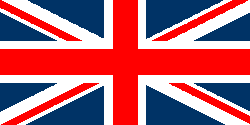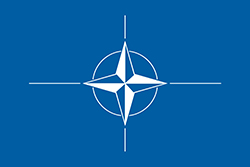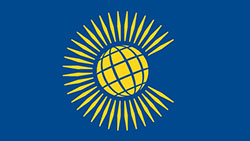Foreign flags in Canada
The Royal Union Flag

When flown or displayed in Canada, the Royal Union Flag, commonly known as the “Union Jack,” serves three purposes. First, it is the national flag of the United Kingdom; second, it is flown as a symbol of Canada’s membership in the Commonwealth and allegiance to the Crown; and third, it can be flown as a historical flag, used by Canada as a national flag before the adoption of the current National Flag in 1965.
Although the Canadian Red Ensign was also widely used as an emblem of Canada from the time of Confederation until 1965, it was never formally adopted as the national flag. The Red Ensign currently has no recognized precedence in Canada other than as a historical flag.
Did you know?
The Union Jack maintains its presence in Canada through its incorporation in the provincial flags of Ontario, Manitoba and British Columbia.
The order of precedence of the Union Jack, in relation to provincial and territorial flags, varies in accordance with the reason it is flown.
Precedence – Representing the United Kingdom
When representing the United Kingdom as a sovereign nation, the Union Jack takes precedence over a Canadian provincial or territorial flag, as established in the order of precedence for flags.
Precedence – Representing Canada's membership in the Commonwealth or allegiance to the Crown
When representing Canada's membership in the Commonwealth or allegiance to the Crown, for example during a royal visit, Canadian provincial and territorial flags take precedence over the Union Jack.
When physical arrangements allow,Footnote 1 the Union Jack will be flown along with the National Flag of Canada at federal buildings, airports, military bases and other appropriate establishments within Canada, from sunrise to sunset, on the following occasions annually:
- The date of the official observance of the Sovereign’s birthday (Victoria Day, the Monday preceding May 25);
- The anniversary of the adoption of the Statute of Westminster (December 11); and
- The date of the official observance of Commonwealth Day (the second Monday in March).
The Union Jack may be flown with the National Flag of Canada at the National War Memorial and at similarly appropriate federal locations in Canada and abroad in connection with ceremonies marking anniversaries of events in which the Canadian Armed Forces participated with other Commonwealth forces.
Precedence – When displayed as a historical flag
When displayed as a historical flag of Canada, the Union Jack does not have precedence over other flags in current use. It will be flown according to the internal precedence for use with historical flags, in accordance with the historical flag policy and rules for flying historical flags in Canada.
Flags of international organizations
The United Nations
The United Nations (UN) Flag is flown with the National Flag of Canada on Parliament Hill in Ottawa on United Nations Day, October 24, and by special arrangement on other occasions, including visits to Ottawa by the Secretary General of the United Nations or his/her representative.

The North Atlantic Treaty Organization
The North Atlantic Treaty Organization (NATO) is Canada's first peacetime military alliance, placing the nation in a defensive military alliance with the United States, the nations of Western Europe, and Turkey. The treaty was signed on April 4, 1949. The NATO Flag is not flown on any specific day.

The Commonwealth
The Commonwealth Flag has no official status, but it is flown at the headquarters of the Commonwealth Secretariat in London and at Commonwealth events and meetings. As it is the Union Jack that is flown on Commonwealth Day, there is no specific day on which the Commonwealth Flag is flown in Canada.
Learn more about the Commonwealth, its history, its members and Commonwealth Day.

Did you know?
Two Canadians are credited with the Commonwealth Flag initiative: Arnold Smith, the first Commonwealth Secretary-General, and Pierre Elliott Trudeau, Prime Minister of Canada when the flag was made official in 1976. The symbol on the Commonwealth Flag consists of a series of thin lozenges or spears, arranged in a radial pattern forming the letter “C” surrounding a stylized representation of the globe. The number of rays does not represent the number of countries within the Commonwealth but rather the many dimensions of Commonwealth co-operation.